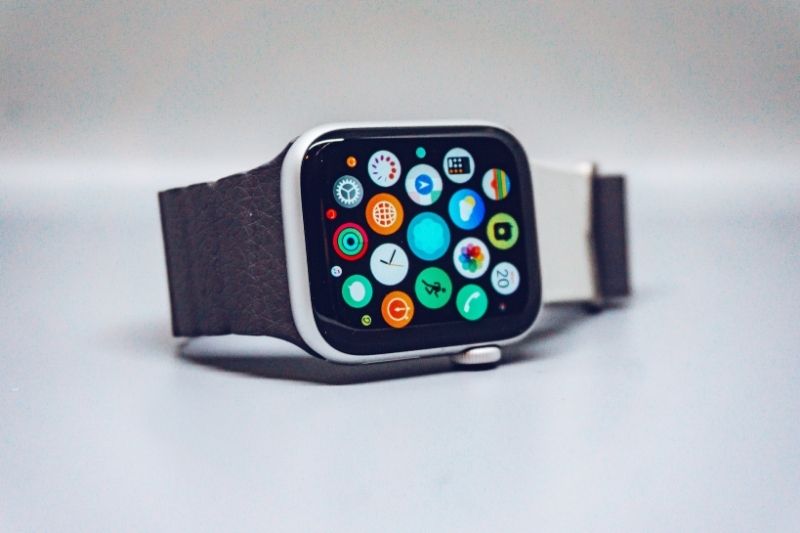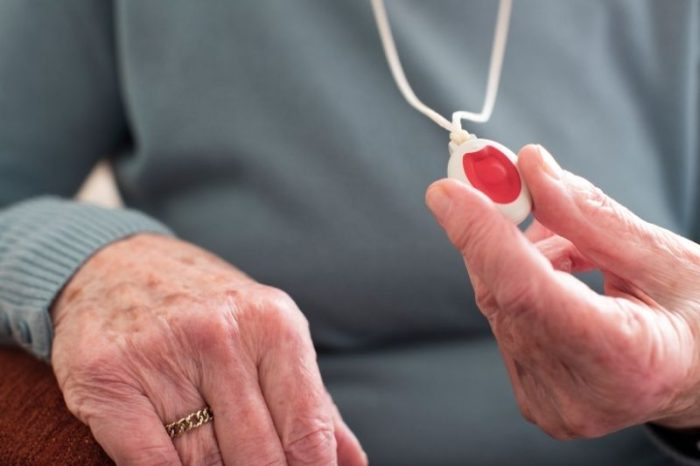Recently, OurSeniors.net published an article that reviewed several of the new, high-tech wearable devices that can monitor a senior’s vital signs. These devices can keep track of measurements like heart rate and blood pressure, respiration and even observe exercise and sleep patterns. Emergency-use “Medical Alert” devices are a related topic, perhaps of greater interest. While a fitness or activity tracker can improve a senior’s health, medical alert devices can literally make the difference between life and death.
Life Alert Program
The Life Alert Program, a service dating back to 1972, states that on average, it intervenes in one life-threatening situation every 10 minutes. Its ad line, “Help, I’ve fallen and can’t get up,” is one of the best-known commercial dialogues of all time. The original device was a pendant-shaped gadget, worn on a wristband or as a necklace. As you would expect, these devices have come a long way since the 1970’s. Beyond instant emergency assistance, today’s alert technology can offer a variety of services such as automatic fall detection and sophisticated medical monitoring.
Medical alert devices can be categorized in several ways. Some are home-based and operate only within a short distance of a base station permanently located in one place. Many newer ones are mobile and can travel with the user as long as they are within the Bluetooth range of a cell phone or have access to a cell phone signal. Obviously, mobile devices have many advantages, but the older home-based systems remain a popular option. These simpler devices allow many seniors to remain in their own homes, even if they are fearful of a fall or other mishap. They are also widely used in assisted living facilities, where summoning rapid assistance may be common.
An important distinction for many seniors is the difference between unmonitored (no monthly fee) devices and those which charge a premium for professional monitoring and response. Living on a fixed income may make the more expensive, monitored devices out-of-reach. From the user’s point of view, the difference between no-fee systems and monitored products is who responds to a call for help. An unmonitored system will dial local 911 directly, or it can connect to any one of several preprogramed phone numbers chosen by the user. Typically, these preselected numbers will be family members, caretakers or close friends. The fee-driven systems will connect to a company call center and a trained representative who judges the severity of the situation then contacts the proper emergency services.
While there are dozens of no-fee medical alert systems, there seems to be a wide range of quality involved. Searching the Amazon site for “medical alert systems/no monthly fee” will bring up dozens of choices—far too many for OSN to review. If you are shopping here, a good rule of thumb is to always look for a product with many reviews and at least a four-star average rating. Read the ratings to learn about other senior experiences with the item. How difficult is it to program and use? What is the battery life, the ease of carrying or wearing, and other features?
Here is an example, a four and one-half star-rated product on Amazon
“The FastHelp™ Medical Alert Device charges no monthly fees and needs no landline or cell phone, just an available cell signal. It places a call directly to local 911 services wherever cellular connections are available. It will act as a two-way speakerphone after connection to 911, and it sells for $149 on the Amazon site.”
We started this article by noting the senior-friendly usefulness of activity trackers and wearable devices that encourage fitness. As seniors become more and more tech-friendly, they will expand the use of these devices to maintain and improve health status. No doubt, doctors will begin to use them to routinely monitor vital signs and head off problems before they become too serious. A dual-purpose device that serves both as a medical alert device and a wearable monitor seems like a natural combination. However, several searches using terms like “wearable medical alert device” or “activity tracker/no fee medical alert” did not find exactly what we had in mind.
That is, currently we could find no fitness tracker with a dedicated, traditional medical alert feature. Instead, many of these searches lead to lists of monitored medical alert devices that have subscription fees of $30 or more per month; this is what we want to avoid. At first, these devices might be relatively inexpensive, but over a year’s time, the user will pay subscription fees of $400+ when taxes and fees are added. If this fits your needs and budget, then one of the monitored, monthly fee plans might be best for you.
But wait! There is an alternative that might be as close to perfect as we can get right now. This is one of the newer “smartwatches” that can monitor blood pressure, heart rate, exercise activity, even blood oxygen, and can also connect to a mobile phone service to transmit GPS data and a call for help. These devices are initially more expensive, but there are no monthly fees to pay year after year. The best known of these devices is the “Apple Watch” pictured here.

This device can put you in contact with a 911 service without using a cell phone, thus serving the dual purposes of a wearable fitness tracker and medical emergency alert. You can even tell the correct time! The downside is a relatively high initial cost, however, that cost may be less than the total annual expense of monitored devices. The Apple Watch shown sells for $384, a stiff initial outlay. But:
- It involves no continuing monthly costs.
- It monitors health and activity levels.
- It enables a senior to make immediate contact with 911 services, giving them GPS data to locate the emergency situation.
- It needs no cell phone to operate (cell network signal is required).
- It has numerous other uses and functions – it even looks like a watch and tells time!
When buying a medical alert device for yourself or a loved one, think ahead and consider the long-term factors. Do you need a mobile device, or will a fixed home-based system do? Be sure you understand the continuing expenses if any. Some medical alert companies lock you into yearly contracts, and there may be no backing out. How difficult is it to program the device, will it operate throughout the house, is there a free trial period?
For information about any senior-related need, you may contact an OurSeniors.net Advisor by phone at 866-333-2657 (se habla Español) or Contact Us. Take an online look at our senior living magazine, OurSeniors.net Magazine. You can view the entire OurSeniors.net Approved Vendors and Partners.

